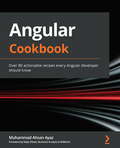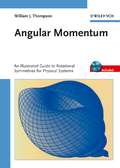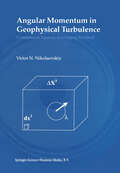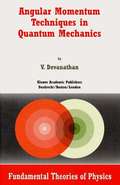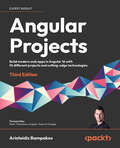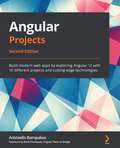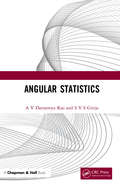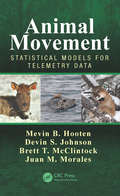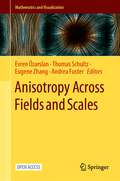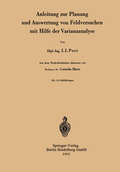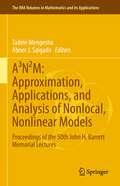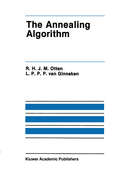- Table View
- List View
Angles in the same segment are equal (UEB uncontracted)
by New College WorcesterThis is an image of a circle containing two triangles. There is a locator dot shown, which will be at the top left of the page when the image is the correct way up. Two angles of each triangle touch the circle circumference. The other angle is where the triangles meet in the middle of the diagram.
Angles in triangles (large print)
by RnibThese pages show two labelled triangles on each page. It is a multi-page image set on two pages. There is a locator dot shown on each page, which will be at the top left when the image is the correct way up. Work out what the value is of the angles marked with a letter. The top triangle is a scalene triangle. It has no sides or angles the same. The bottom triangle is an isosceles triangle. It has two sides and two angles the same. The top diagram is an equilateral triangle. All sides are the same length and all angles are equal (60 degrees). The bottom diagram is a right-angled triangle. It has one right angle (90 degrees).
Angles in triangles (UEB contracted)
by RnibThese pages show two labelled triangles on each page. It is a multi-page image set on two pages. There is a locator dot shown on each page, which will be at the top left when the image is the correct way up. Work out what the value is of the angles marked with a letter. The top triangle is a scalene triangle. It has no sides or angles the same. The bottom triangle is an isosceles triangle. It has two sides and two angles the same. The top diagram is an equilateral triangle. All sides are the same length and all angles are equal (60 degrees). The bottom diagram is a right-angled triangle. It has one right angle (90 degrees).
Angles in triangles (UEB uncontracted)
by RnibThese pages show two labelled triangles on each page. It is a multi-page image set on two pages. There is a locator dot shown on each page, which will be at the top left when the image is the correct way up. Work out what the value is of the angles marked with a letter. The top triangle is a scalene triangle. It has no sides or angles the same. The bottom triangle is an isosceles triangle. It has two sides and two angles the same. The top diagram is an equilateral triangle. All sides are the same length and all angles are equal (60 degrees). The bottom diagram is a right-angled triangle. It has one right angle (90 degrees).
Angles (large print)
by RnibThese pages show labelled angles on each page. It is a multi-page image set on two pages. There is a locator dot shown on each page, which will be at the top left when the image is the correct way up. At the top of the page are two diagrams of a straight line. The first has two angles and the second has four angles. To the right of each diagram is an equation showing that the angles in each case add up to 180 degrees. At the bottom of the page is a diagram of five angles around a point. To the right of the diagram is an equation showing that the angles add up to 360 degrees. There are four small diagrams on this page. The top two are angles for measuring with a protractor. The bottom two have angles that are shown, but there is one angle in each labelled with a letter for calculation. Both diagrams have a right angle.
Angles (mixed questions) (large print)
by New College WorcesterThese four pages each have two or three shapes or sets of lines making angles. Some angles are marked in degrees and some with a letter. Calculate the angle of those marked by a letter. There is a locator dot shown, which will be at the top left of the page when the image is the correct way up.
Angles (mixed questions) (UEB contracted)
by New College WorcesterThese four pages each have two or three shapes or sets of lines making angles. Some angles are marked in degrees and some with a letter. Calculate the angle of those marked by a letter. There is a locator dot shown, which will be at the top left of the page when the image is the correct way up.
Angles (mixed questions) (UEB contracted)
by New College WorcesterThese four pages each have two or three shapes or sets of lines making angles. Some angles are marked in degrees and some with a letter. Calculate the angle of those marked by a letter. There is a locator dot shown, which will be at the top left of the page when the image is the correct way up.
Angles (mixed questions) (UEB uncontracted)
by New College WorcesterThese four pages each have two or three shapes or sets of lines making angles. Some angles are marked in degrees and some with a letter. Calculate the angle of those marked by a letter. There is a locator dot shown, which will be at the top left of the page when the image is the correct way up.
Angles (UEB contracted)
by RnibThese pages show labelled angles on each page. It is a multi-page image set on two pages. There is a locator dot shown on each page, which will be at the top left when the image is the correct way up. At the top of the page are two diagrams of a straight line. The first has two angles and the second has four angles. To the right of each diagram is an equation showing that the angles in each case add up to 180 degrees. At the bottom of the page is a diagram of five angles around a point. To the right of the diagram is an equation showing that the angles add up to 360 degrees. There are four small diagrams on this page. The top two are angles for measuring with a protractor. The bottom two have angles that are shown, but there is one angle in each labelled with a letter for calculation. Both diagrams have a right angle.
Angles (UEB uncontracted)
by RnibThese pages show labelled angles on each page. It is a multi-page image set on two pages. There is a locator dot shown on each page, which will be at the top left when the image is the correct way up. At the top of the page are two diagrams of a straight line. The first has two angles and the second has four angles. To the right of each diagram is an equation showing that the angles in each case add up to 180 degrees. At the bottom of the page is a diagram of five angles around a point. To the right of the diagram is an equation showing that the angles add up to 360 degrees. There are four small diagrams on this page. The top two are angles for measuring with a protractor. The bottom two have angles that are shown, but there is one angle in each labelled with a letter for calculation. Both diagrams have a right angle.
Angular Cookbook: Over 90 Recipes To Develop Your Enterprise-scale Angular Web Development Skills
by Muhammad Ahsan Ayaz Najla ObaidOver 80 actionable recipes every Angular developer should know
Angular Momentum: An Illustrated Guide to Rotational Symmetries for Physical Systems
by William J. ThompsonDevelops angular momentum theory in a pedagogically consistent way, starting from the geometrical concept of rotational invariance. Uses modern notation and terminology in an algebraic approach to derivations. Each chapter includes examples of applications of angular momentum theory to subjects of current interest and to demonstrate the connections between various scientific fields which are provided through rotations. Includes Mathematica and C language programs.
Angular Momentum in Geophysical Turbulence: Continuum Spatial Averaging Method
by Victor N. NikolaevskiyTurbulence theory is one of the most intriguing parts of fluid mechanics and many outstanding scientists have tried to apply their knowledge to the development of the theory and to offer useful recommendations for solution of some practical problems. In this monograph the author attempts to integrate many specific approaches into the unified theory. The basic premise is the simple idea that a small eddy, that is an element of turbulent meso-structure, possesses its own dynamics as an object rotating with its own spin velocity and obeying the Newton dynamics of a finite body. A number of such eddies fills a coordinate cell, and the angular momentum balance has to be formulated for this spatial cell. If the cell coincides with a finite difference element at a numerical calculation and if the external length scale is large, this elementary volume can be considered as a differential one and a continuum parameterization has to be used. Nontrivial angular balance is a consequence of the asymmetrical Reynolds stress action at the oriented sides of an elementary volume. At first glance, the averaged dyad of velocity components is symmetrical, == However, if averaging is performed over the plane with normal nj, the principle of commutation is lost. As a result, the stress tensor asymmetry j is determined by other factors that participate in the angular momentum balance. This is the only possibility to determine a stress in engineering.
Angular Momentum Techniques in Quantum Mechanics (Fundamental Theories of Physics #108)
by V. DevanathanA course in angular momentum techniques is essential for quantitative study of problems in atomic physics, molecular physics, nuclear physics and solid state physics. This book has grown out of such a course given to the students of the M. Sc. and M. Phil. degree courses at the University of Madras. An elementary knowledge of quantum mechanics is an essential pre-requisite to undertake this course but no knowledge of group theory is assumed on the part of the readers. Although the subject matter has group-theoretic origin, special efforts have been made to avoid the gro- theoretical language but place emphasis on the algebraic formalism dev- oped by Racah (1942a, 1942b, 1943, 1951). How far I am successful in this project is left to the discerning reader to judge. After the publication of the two classic books, one by Rose and the other by Edmonds on this subject in the year 1957, the application of angular momentum techniques to solve physical problems has become so common that it is found desirable to organize a separate course on this subject to the students of physics. It is to cater to the needs of such students and research workers that this book is written. A large number of questions and problems given at the end of each chapter will enable the reader to have a clearer understanding of the subject.
Angular Projects: Build Modern Web Apps In Angular 16 With 10 Different Projects And Cutting-edge Technologies
by Aristeidis Bampakos Mark ThompsonAngular Projects: Build Modern Web Apps By Exploring Angular 12 With 10 Different Projects And Cutting-edge Technologies, 2nd Edition
by Mark Thompson Aristeidis BampakosBuild modern web apps by exploring Angular 12 with 10 different projects and cutting-edge technologies
Angular Statistics
by A V Rao S V GirijaDirectional data arise in the form of circular / semicircular / axial, symmetric / asymmetric, uni / bimodal data, in practical situations of varied fields. For the purpose of modeling such kind of data sets, the data scientists found that existing models as inadequate. As there is paucity of angular models, and to fill the gap, this book is designed at constructing new angular models with the existing techniques and to develop new tools of constructing angular models with an application to control charts in angular models. This book is planned to cover the following topics in nine chapters Wrapped, stereographic and offset circular models Construction of angular models using Rising Sun function, positive definite sequences, discretization and through differential approach Extemporaneous Semicircular / arc and asymmetric l – axial models Choice of angular models as an inferential aspect and construction of control charts for angular data as an application are presented. This graduate level book will be useful for data scientists, researchers and research students of Statistics and allied fields.
Angular Statistics
by A V Rao S V GirijaDirectional data arise in the form of circular / semicircular / axial, symmetric / asymmetric, uni / bimodal data, in practical situations of varied fields. For the purpose of modeling such kind of data sets, the data scientists found that existing models as inadequate. As there is paucity of angular models, and to fill the gap, this book is designed at constructing new angular models with the existing techniques and to develop new tools of constructing angular models with an application to control charts in angular models. This book is planned to cover the following topics in nine chapters Wrapped, stereographic and offset circular models Construction of angular models using Rising Sun function, positive definite sequences, discretization and through differential approach Extemporaneous Semicircular / arc and asymmetric l – axial models Choice of angular models as an inferential aspect and construction of control charts for angular data as an application are presented. This graduate level book will be useful for data scientists, researchers and research students of Statistics and allied fields.
Animal Movement: Statistical Models for Telemetry Data
by Mevin B. Hooten Devin S. Johnson Brett T. McClintock Juan M. MoralesThe study of animal movement has always been a key element in ecological science, because it is inherently linked to critical processes that scale from individuals to populations and communities to ecosystems. Rapid improvements in biotelemetry data collection and processing technology have given rise to a variety of statistical methods for characterizing animal movement. The book serves as a comprehensive reference for the types of statistical models used to study individual-based animal movement. Animal Movement is an essential reference for wildlife biologists, quantitative ecologists, and statisticians who seek a deeper understanding of modern animal movement models. A wide variety of modeling approaches are reconciled in the book using a consistent notation. Models are organized into groups based on how they treat the underlying spatio-temporal process of movement. Connections among approaches are highlighted to allow the reader to form a broader view of animal movement analysis and its associations with traditional spatial and temporal statistical modeling. After an initial overview examining the role that animal movement plays in ecology, a primer on spatial and temporal statistics provides a solid foundation for the remainder of the book. Each subsequent chapter outlines a fundamental type of statistical model utilized in the contemporary analysis of telemetry data for animal movement inference. Descriptions begin with basic traditional forms and sequentially build up to general classes of models in each category. Important background and technical details for each class of model are provided, including spatial point process models, discrete-time dynamic models, and continuous-time stochastic process models. The book also covers the essential elements for how to accommodate multiple sources of uncertainty, such as location error and latent behavior states. In addition to thorough descriptions of animal movement models, differences and connections are also emphasized to provide a broader perspective of approaches.
Animal Movement: Statistical Models for Telemetry Data
by Juan M. Morales Mevin B. Hooten Devin S. Johnson Brett T. McClintockThe study of animal movement has always been a key element in ecological science, because it is inherently linked to critical processes that scale from individuals to populations and communities to ecosystems. Rapid improvements in biotelemetry data collection and processing technology have given rise to a variety of statistical methods for characterizing animal movement. The book serves as a comprehensive reference for the types of statistical models used to study individual-based animal movement. Animal Movement is an essential reference for wildlife biologists, quantitative ecologists, and statisticians who seek a deeper understanding of modern animal movement models. A wide variety of modeling approaches are reconciled in the book using a consistent notation. Models are organized into groups based on how they treat the underlying spatio-temporal process of movement. Connections among approaches are highlighted to allow the reader to form a broader view of animal movement analysis and its associations with traditional spatial and temporal statistical modeling. After an initial overview examining the role that animal movement plays in ecology, a primer on spatial and temporal statistics provides a solid foundation for the remainder of the book. Each subsequent chapter outlines a fundamental type of statistical model utilized in the contemporary analysis of telemetry data for animal movement inference. Descriptions begin with basic traditional forms and sequentially build up to general classes of models in each category. Important background and technical details for each class of model are provided, including spatial point process models, discrete-time dynamic models, and continuous-time stochastic process models. The book also covers the essential elements for how to accommodate multiple sources of uncertainty, such as location error and latent behavior states. In addition to thorough descriptions of animal movement models, differences and connections are also emphasized to provide a broader perspective of approaches.
Anisotropy Across Fields and Scales (Mathematics and Visualization)
by Evren Özarslan Thomas Schultz Eugene Zhang Andrea FusterThis open access book focuses on processing, modeling, and visualization of anisotropy information, which are often addressed by employing sophisticated mathematical constructs such as tensors and other higher-order descriptors. It also discusses adaptations of such constructs to problems encountered in seemingly dissimilar areas of medical imaging, physical sciences, and engineering. Featuring original research contributions as well as insightful reviews for scientists interested in handling anisotropy information, it covers topics such as pertinent geometric and algebraic properties of tensors and tensor fields, challenges faced in processing and visualizing different types of data, statistical techniques for data processing, and specific applications like mapping white-matter fiber tracts in the brain.The book helps readers grasp the current challenges in the field and provides information on the techniques devised to address them. Further, it facilitates the transfer of knowledge between different disciplines in order to advance the research frontiers in these areas.This multidisciplinary book presents, in part, the outcomes of the seventh in a series of Dagstuhl seminars devoted to visualization and processing of tensor fields and higher-order descriptors, which was held in Dagstuhl, Germany, on October 28–November 2, 2018.
Anleitung zur Planung und Auswertung von Feldversuchen mit Hilfe der Varianzanalyse
by Jan J. PostWenn auch die Anzahl derjenigen, die den Inhalt dieses Buches durcharbeiten und in sich aufnehmen werden, nicht allzu groß sein wird, so meinten wir doch. es herausgeben zu müssen. Außer bei denjenigen, die auf dem Gebiet des Garten baus arbeiten, wird es zweifellos auch bei anderen Interesse finden. Durch die weitere Entwicklung der Forschung ist es notwendig geworden, daß diejenigen. die die Ergebnisse verarbeiten und die Folgerungen daraus ziehen müssen, gut orientiert sind über die Methoden, die hierfür bestehen. Statt daß alle Unter sucher sich in diese nicht immer einfache Materie einarbeiteten, hielten wir es für wünschenswert, daß einer sich hierin spezialisierte. Alle diejenigen, die diese Ergebnisse bei ihrer Arbeit nötig haben, werden Herrn Dipl. -Ing. J. J. POST dankbar sein, daß er ihnen das Ergebnis seiner Arbeit in dieser Form zur Verfügung stellt. A. W. van de Plassehe. Vorwort zur deutschen Ausgabe. Die Bemühungen um eine richtige Deutung der Ergebnisse biologischer Unter suchungen haben in den vergangenen Jahren die Herausgabe einer Anzahl von Lehrbüchern und kürzeren Anleitungen für die statistische Auswertung von Ver süchsdaten veranlaßt. Die größeren Werke, die sich mit den Grundlagen der biologischen Statistik befassen, sind aber so umfangreich, daß vielen die Zeit fehlen wird, sie gründlich durchzuarbeiten, während die kurz gefaßten Anleitungen sich fast ausschließlich mit den einfachen Methoden befassen, die für eine ausreichende Auswertung von umfangreichen Versuchsreihen nicht genügen.
A³N²M: Proceedings of the 50th John H. Barrett Memorial Lectures (The IMA Volumes in Mathematics and its Applications #165)
by Tadele Mengesha Abner J. SalgadoThis volume collects papers based on plenary and invited talks given at the 50th Barrett Memorial Lectures on Approximation, Applications, and Analysis of Nonlocal, Nonlinear Models that was organized by the University of Tennessee, Knoxville and held virtually in May 2021. The three-day meeting brought together experts from the computational, scientific, engineering, and mathematical communities who work with nonlocal models. These proceedings collect contributions and give a survey of the state of the art in computational practices, mathematical analysis, applications of nonlocal models, and explorations of new application domains. The volume benefits from the mixture of contributions by computational scientists, mathematicians, and application specialists. The content is suitable for graduate students as well as specialists working with nonlocal models and covers topics on fractional PDEs, regularity theory for kinetic equations, approximation theory for fractional diffusion, analysis of nonlocal diffusion model as a bridge between local and fractional PDEs, and more.
The Annealing Algorithm (The Springer International Series in Engineering and Computer Science #72)
by R.H.J.M. Otten L.P.P.P. van GinnekenThe goal of the research out of which this monograph grew, was to make annealing as much as possible a general purpose optimization routine. At first glance this may seem a straight-forward task, for the formulation of its concept suggests applicability to any combinatorial optimization problem. All that is needed to run annealing on such a problem is a unique representation for each configuration, a procedure for measuring its quality, and a neighbor relation. Much more is needed however for obtaining acceptable results consistently in a reasonably short time. It is even doubtful whether the problem can be formulated such that annealing becomes an adequate approach for all instances of an optimization problem. Questions such as what is the best formulation for a given instance, and how should the process be controlled, have to be answered. Although much progress has been made in the years after the introduction of the concept into the field of combinatorial optimization in 1981, some important questions still do not have a definitive answer. In this book the reader will find the foundations of annealing in a self-contained and consistent presentation. Although the physical analogue from which the con cept emanated is mentioned in the first chapter, all theory is developed within the framework of markov chains. To achieve a high degree of instance independence adaptive strategies are introduced.

